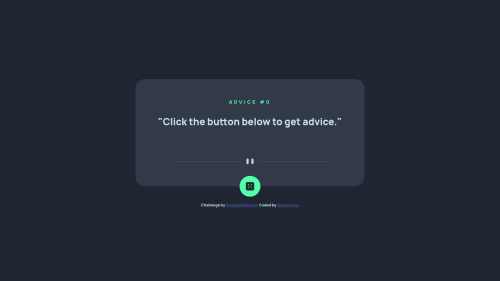Solution that waits for new quotes

Solution retrospective
I tried to implement a feature where the button will be disabled for 2 seconds after fetching (since that's how the Advice Slip API works; it returns a cached version of the previous quote if you request too frequently). It seems to work decently, but I've noticed that rapidly clicking on it can break it. Is this something you run into, and if so, how would you handle it?
Please log in to post a comment
Log in with GitHubCommunity feedback
- @lipe11
hi,
I think the timeout worked pretty good. I tried to fast click the button but barely saw it act weirdly.
However, if you want to get rid of the effect, you might want to try something like throttling. I'll leave a reference here. As a first approach, you could try something like this
let waiting = false buttonWrapper.addEventListener("click", (e) => { if (waiting) return waiting = true getAdvice() setTimeout(() => { waiting = false }, 2000); })Marked as helpful - @isprutfromua
also i found some css issues: use only one type of selectors (class or id, but class is preferred)
.card__text { .... #card-button {it's better to set class for an image
#advice-button > img { display: block; }it's not good to use nesting selectors with bem methodology
.card__wrapper > .card__header {Marked as helpful - @isprutfromua
Hi there. You did a good job 😎
🛠️
keep improving your programming skills
your solution looks great, however, if you want to improve it, you can follow these steps:
✅ you can do it with HTML picture
function changeDivider() { const dividerImg = document.getElementById('divider-img'); if (window.innerWidth > 500) { dividerImg.src = 'images/pattern-divider-desktop.svg'; } else { dividerImg.src = 'images/pattern-divider-mobile.svg'; } }✅ there is no need to prevent event inside the fetching function
getAdvice(e) { e.preventDefault();Marked as helpful
Join our Discord community
Join thousands of Frontend Mentor community members taking the challenges, sharing resources, helping each other, and chatting about all things front-end!
Join our Discord